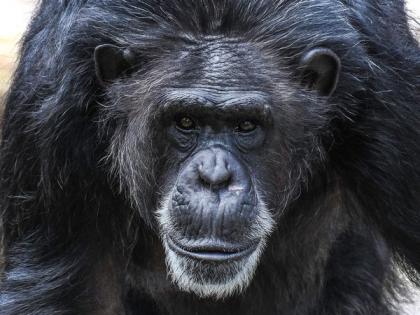AI to help identify chimpanzee faces in the wild
By ANI | Updated: September 8, 2019 18:30 IST2019-09-08T18:14:01+5:302019-09-08T18:30:12+5:30
New AI software will now help wildlife conservationists to recognise individual faces of chimpanzees further helping them by saving time and resources, claim researchers.

AI to help identify chimpanzee faces in the wild
New AI software will now help wildlife conservationists to recognise individual faces of chimpanzees further helping them by saving time and resources, claim researchers.
"For species like chimpanzees, which have complex social lives and live for many years, getting snapshots of their behaviour from short-term field research can only tell us so much," said Dan Schofield, researcher and DPhil student at Oxford University's Primate Models Lab, School of Anthropology.
"By harnessing the power of machine learning to unlock large video archives, it makes it feasible to measure behaviour over the long term, for example observing how the social interactions of a group change over several generations," continued Schofield in the study published in the journal, 'Science Advances'.
The computer model was trained using over 10 million images from Kyoto University's Primate Research Institute (PRI) video archive of wild chimpanzees in Guinea, West Africa.
The new software is the first to continuously track and recognise individuals in a wide range of poses, performing with high accuracy in difficult conditions such as low lighting, poor image quality, and motion blur.
"Access to this large video archive has allowed us to use cutting edge deep neural networks to train models at a scale that was previously not possible," said Arsha Nagr, co-author of the study and DPhil student at the Department of Engineering Science, University of Oxford.
"Additionally, our method differs from previous primate face recognition software in that it can be applied to raw video footage with limited manual intervention or pre-processing, saving hours of time and resources," added Nagr.
The technology has the potential for many uses, such as monitoring species for conservation. Although the current application focused on chimpanzees, the software provided could be applied to other species and helps drive the adoption of artificial intelligence systems to solve a range of problems in the wildlife sciences.
"All our software is available open-source for the research community. We hope that this will help researchers across other parts of the world apply the same cutting-edge techniques to their unique mal data sets. As a computer vision researcher, it is extremely satisfying to see these methods applied to solve real, challenging biodiversity problems," said Nagr.
"With an increasing biodiversity crisis and many of the world's ecosystems under threat, the ability to closely monitor different species and populations using automated systems will be crucial for conservation efforts, as well as mal behaviour research," added Dan Schofield.
"Interdisciplinary collaborations like this have huge potential to make an impact, by finding novel solutions for old problems, and asking biological questions which were previously not feasible on a large scale," concluded Schofield.
( With inputs from ANI )
Open in app